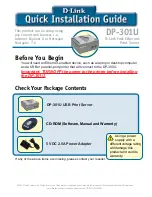
EtherPath-X4 User’s Guide
Appendix C
Programming
This Appendix explains the EtherPath's interface so that external programs that access it
may be developed. This is not used in most applications. The information is for those
writing programs to access the EtherPath via the Ethernet.
Introduction
It is rather straightforward to implement a software application to communicate with serial devices through
the EtherPath. Topics covered in this appendix are:
•
EtherPath description and behavior
•
Application notes
•
Links to sample code
In addition to user-written software applications, there are “port redirector” software packages that
work quite well with the EtherPath. If you are not a "network programmer", then port redirector may
be the quickest way to get an application on-line.
For UNIX systems (AIX, Linux, SCO5, FreeBSD, OSF), Termnet works quite well. It is GNU’d
freeware available from
http://www.dcbnet.com
or http://www.linuxlots.com
For Microsoft Windows systems, Serial/IP is an excellent low-cost program, also available from
http://www.dcbnet.com.
Description and Behavior
Ports used by the EtherPath
The EtherPath uses 3 ports, as follows:
Port
Description
Data Port
‘Server Mode’ EtherPath listens at the port and
offers a raw TCP connection. This port number
is configurable. Default is 3000.
From
Port
The ‘Client Mode’ EtherPath uses a sending port
between 1025 and 4999 to connect to its Remote
Host. The port number starts at 1025, and
increments as needed. Note that EtherPath
version 5.2 and earlier always used port 5000 as
the sending port.
8000
Provides a telnet configuration service for all
modes. Do not use port 8000 in user-written
programs.
For user-written client application, avoid port number 8000. The "Server" will respond to any configured
port number other than that.
48



































